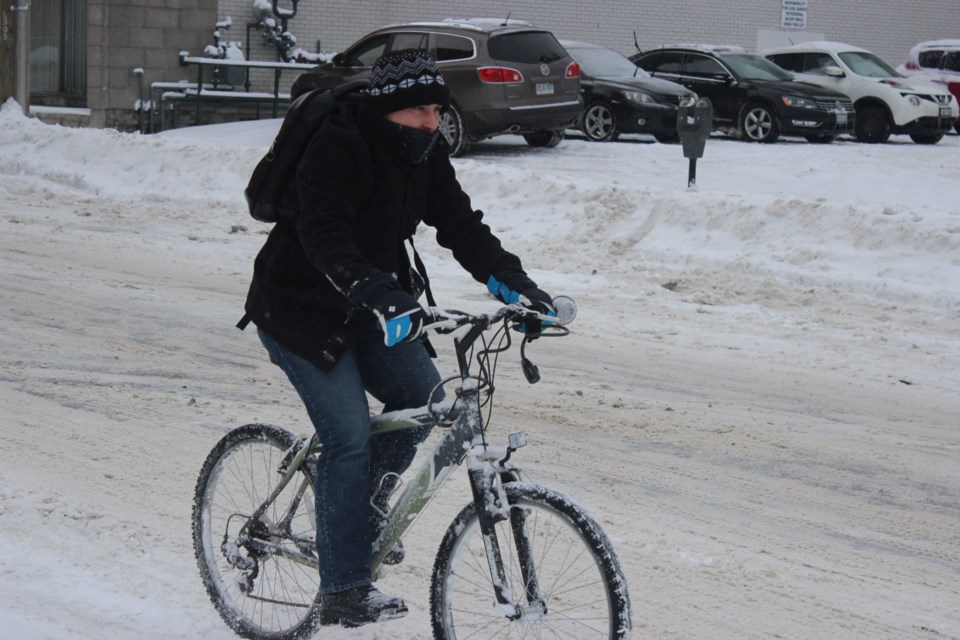The snow and ice might have arrived, but the drastic drop in temperature hasn’t stopped cyclists from continuing to brave the winter streets of North Bay. For people like Ian Donaghey, it simply meant putting one bike away in the shed and pulling out another, specially made bike to traverse the snow.
“It’s been good so far. It’s always a bit tighter and there are always pushy and impatient drivers, but I don’t tend to have many issues in the summer or winter,” he said. “I find if you have lights and ride confidently they don’t really mess with you. I feel like I’m another vehicle on the road and I seem to get treated like one.”
But Donaghey isn’t riding any kind of bike.
The last couple of years has seen a real emergence of fat-tire-bikes, which he has been using to get around in the winter since last year. Cheapskates owner, Barry Klus said the trend has been growing for both recreational use and commuting.
“A couple of clients commute all year round and that’s why they bought them,” he said, explaining how the bike itself is specially designed to handle the harsh winter weather. “You can take them on the lake and on trails. They’re bigger wider tires and the pressure is very low so it helps how they manage the snow and the ice.”
These bikes offer larger forks to accommodate bigger tires which can be studded for extra grip. Klus said these bikes can range in price and quality, just like any other bike, depending on the needs of the cyclist.
And while cycling is still allowed, fat-tire bike or not, North Bay Police usher extra caution to both cyclists and motorists. Richard Dubeau, Staff Sergeant in the traffic section said he’s seen cyclists continue in the winter but cautions extra safety among riders, also reminding cyclists that the rules of the road don’t change from season to season and cyclists are still required to use the roads and signal properly among other rules, just like motorists would do.
“I’ve seen bicyclists wave back and forth with the slush,” he said. “If you’re over 18 (years old) you don’t need to be wearing a helmet, but in these conditions you’re really taking your life in your own hands. We would rather see everybody wear helmets during the winter and be especially more conscious of cars. Motorists don’t always give the required meter in the summer, so in the winter, with the snow banks and road conditions, the odds of getting into contact with a vehicle is greater.”
Despite these conditions, Dubeau said they had yet to have any reported collisions with cyclists for the winter months, while he said they’ve seen a general increase of cyclists on the streets.
So remember, both driver and cyclist, with cold weather and snowed and frozen roads, it can be a dangerous ride for anyone and being conscious of your surroundings and respectful of others on the road can make a big difference.
